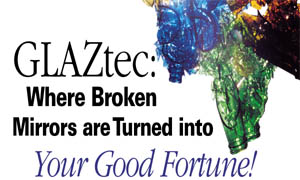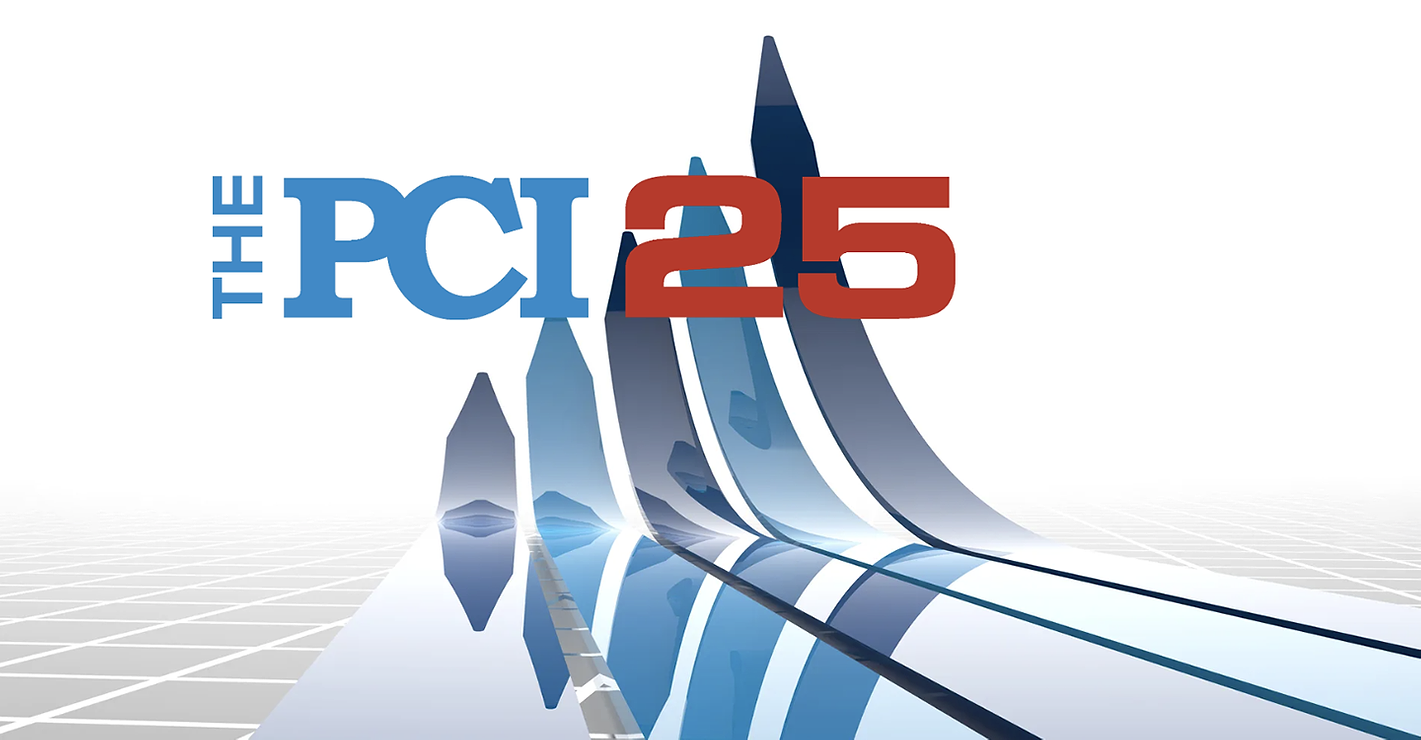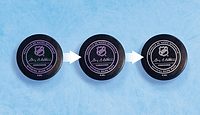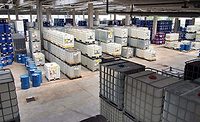GLAZtec: Where Broken Mirrors are Turned into Your Good Fortune!

If breaking a mirror truly brought you seven years’ bad luck, then the people at GLAZtec would be looking forward to spending eternity with a black cloud hanging over their heads. Superstitions aside, the patented process they have developed to make bulk quantities of fine-particle glass from recycled mirrors, glass and shells stands to revolutionize the coatings industry.
Their unique products, mirrors marketed under the name AstroGlo™ and clear, green and amber glass marketed under the name GlamurGlo™, enhance a growing number of end products that are principally in the coatings and cosmetics arenas. A few of the advantages they impart are available through alternative methods, but at a much greater cost. Most simply can’t be had. And finally, these materials offer a ready solution both to businesses that must comply with EPA standards and the population of consumers that support environmentally friendly products or companies.
Some of the broad areas, in addition to coatings, where applications have been identified so far include the following:
Cosmetics
- Eye makeup
- Other makeup
- Lipstick
- Foundation
- Blush
- Manicure products
- Skincare preparations
- Tanning/sunscreen preparations
Plastics
- Injection-molded
- Extruded
- Rotational
- Thermal
Who’s Interested
Because they offer such compelling improvements over current additives, GLAZtec’s products have already attracted the attention of major automobile companies (General Motors, Ford, Volkswagen, Daimler-Chrysler, Toyota, Honda, Nissan, Mazda and Isuzu), all of whom are studying the product in conjunction with their suppliers. Six of these have given clear indication that the products have received basic design approval, and have now entered the stage of technical development. Four of the automakers have already displayed their glass-based conceptual paints at the 2000 International Auto Show in Detroit. At the 2001 International Auto Show held in New York City, 25 cars were painted with Glaztec paint additives.In total, GLAZtec’s products are in the hands of nearly 100 companies, inside and outside of the automotive industry for purposes of developing new products using its fine-particle materials. In several cases, companies have indicated that development is nearing completion, and the production of commercial products is imminent. These include the following.
- Estee Lauder — cosmetics.
- Mattel — industrial paint and plastics.
- Morton — plastics and injection moldings.
- Motorola — industrial paint.
- Nokia — cellular phone housings.
- Red Spot — industrial paint.
- Sherwin-Williams — industrial spray paint.
- Sport Carriers — sport-related equipment, such as ski racks.
- Wacker Silicones — specialty industrial paint.
The Product
GLAZtec produces large-volume quantities of fine-particle glass flakes that possess a novel combination of particle size, shape, color, reflectivity, abrasion resistance and other characteristics. This makes them useful as quality-enhancing additives in a variety of end products. Particle size is the most crucial characteristic for usage in these end products, and GLAZtec’s particles typically measure 1–15, 1–30 and 1–45 microns in diameter, and 1–3 microns thick (1 micron (µ) = .0000394 mm). The products — marketed under the names AstroGlo (consisting of mirrors with a 2x magnification) and GlamurGlo (consisting of amber, green and/or clear glass) — are made from widely available varieties of post-consumer and post-industrial waste glass, including clear, green, and amber bottles; and mirrors. Through their ability to beautify and protect, these products are appealing. As paint or cosmetic ingredients, AstroGlo and GlamurGlo do that — and more.Though a good part of this article will emphasize automotive applications, it should not be misinterpreted to mean that GLAZtec is less active or has fewer ambitions in the non-automotive markets. In fact, commercial products in the non-automotive markets will likely precede, and may eventually exceed, those in the automotive market.
Automotive Paint
In order to fully appreciate GLAZtec’s customer value proposition, a quick review of the automotive paint market and the technical aspects of automotive paint is essential. It’s well known that the major American and foreign automobile manufacturers focus primarily on design, assembly, marketing and distribution of finished vehicles, while outsourcing to countless suppliers the manufacture and assembly of components, parts, and materials. Paint, painted parts and materials, both for the exterior and interior of automobiles, are no exception. In industry terminology, these products typically fall into one of the following five categories.- OEM — Paints provided directly to automakers for application during vehicle assembly.
- 1st Tier — Certain add-on parts, such as bumpers, mirror housings and wheels, that are painted prior to delivery to automakers.
- 2nd Tier — Certain small ornamental parts, such as name plates, stripes, moldings, lamp assemblies, interior bezels and instrument assemblies, that are also painted prior to delivery to automakers.
- 3rd Tier (and lower) — Certain sub-assembly parts, which are also pre-painted.
- After-market — Paint, painted parts and materials that are provided to repair shops, dealerships, and retailers for automotive repair and refinishing.
A good paint raw material can help paint manufacturers sell more paint, but, more importantly, it can also help the automakers sell more automobiles. The automotive companies have a tremendous interest — and influence — in seeing that the best paint additives come to market.
In today’s automotive market, image-enhancing additives are used to create visual effects that have strong aesthetic appeal among consumers. An image-enhancing additive is a finely ground material that contributes to a paint’s visual characteristics. Pigment is usually associated with generating color. Other types of additives (e.g., aluminum) are not primarily responsible for generating color, but nevertheless contribute to the overall visual characteristics of the paint.
In industry terminology, these visual effects are as follows.
- Luster — Also called gloss or sparkle, it refers to the brilliance of color that is caused by the reflective qualities (or specular flash) of the paint.
- Travel between Face and Flop — This refers to different viewing angles. Face means a viewing angle that is within about 30º of the perpendicular to the painted surface. Flop means a viewing angle that is more oblique, where the line of view more closely parallels the plane of the painted surface. Consumers normally have an aesthetic preference for a visual effect where the face view produces a high specular flash with brilliance of color, and the flop view produces a contrasting, translucent color appearance.
- Depth — An appealing visual illusion in the painted surface.
- Distinctiveness of Image (DOI) — A crucial aesthetic factor, DOI refers to the crispness or clarity of an image that is reflected in the paint.
Of course, different consumers have different tastes, and different paints are made to accentuate varying degrees of these visual characteristics. Therefore, an additive may be judged by the degree to which it gives the designer the ability to both create and control these effects. The capacity to generate and manipulate these effects is based on the size, shape and optical properties of the additive particles, as well as the orientation of these particles within the binder.
The figure shows a transparent paint film that has additive particles suspended within. Some of them are flat, and others are square. As we’ll see, the flat particles are more successful at creating what is known as specular reflection, where the angle of reflection equals the angle of incidence of incoming light. Specular reflection is good for the creation and control of the preferred visual effects. The square particles tend to create diffuse reflection, where the angle of reflection does not equal the angle of incidence. The diffuse reflectance is all of the reflected radiant energy except for that of the specular angle. The randomness of diffuse reflection detracts from the designer’s ability to create and control the desired effects.
To best generate specular reflection in paint, the particles must have the following characteristics:
- Optical Properties — They must be transparent and have a high refractive index, which means they must partially reflect and partially transmit light.
- Size — They must be smaller than about 30 microns, so as not to protrude through the paint film. They should be even smaller to allow for layering of the particles within the film. Specular reflection from several layers within the film produces the important illusion of depth.
- Shape — They must be flat, not square or round. Particles with a high aspect ratio — the ratio of length to height — have greater surface area for creating specular reflection, and, as a whole, fewer edges that tend to create diffuse reflection.
Particles that exhibit all of these characteristics are not easy to come by naturally or to produce. Most often, the particle is actually a composite of different materials. For example, one of the most common automotive pigment particles — titanium dioxide coated mica — uses mica as the base particle because it is transparent and has the desired size and shape characteristics after processing. Mica does not have a high refractive index, however, so the particle is coated with another material that does, TiO2. Exterior-grade pigments — like those used in automotive paint — require final surface treatment to protect against paint degradation caused by exposure to UV radiation from sunlight and abrasion from weather and cleaning.
The process of applying paint to an automobile is highly automated, so all paint components must be compatible for use with robotic spray guns. This means that the particles, like image-enhancing additives, must be very small, so as not to clog or damage standard equipment. When applying a stylized paint pattern, it is very difficult to achieve a uniform distribution of that pattern over the entire surface of the automobile. The choice of paint components can either aggravate or alleviate problems of sagging, waste generation and pattern control.
Customer Value
GLAZtec’s customer value proposition is based on the popular premise:Customer Value = Customer Benefit - Price
The very foundation of our business is built on the idea that our end-customers, the automakers, will derive benefits from our product that far outweigh the price they will pay for it. Moreover, they will find more value in the use of our product than in the use of any potentially competing product. GLAZtec’s products both beautify and protect automobiles — direct benefits that can translate into increased sales for automakers. Additionally, the products deliver indirect benefits to automakers in the form of increased efficiency in paint application and decreased costs for compliance with environmental regulations.
The automakers and their outside paint design consultants at the Color Design Studio of America (CDSA) agree that GLAZtec products gives designers and engineers unequaled ability to create and control the visual effects that today’s automobile consumers demand, including luster, travel between face and flop, depth, distinctiveness of image, and other stylized effects. “Aesthetically, it’s perceived as plus value,” says Robert Fritz, vice president of the CDSA, a division of Nippon Paint.
GLAZtec’s fine-particle glass flakes have the unique size, shape and optical characteristics required of a high-quality additive. Moreover, the product comes in various colors — including the primary mixing colors — which derive directly from the pre-colored raw material. Thus, these products give designers increased ability to create, enhance, and control color quality, either using the glass additive alone or in combination with other color-generating pigments. Either way, customers save on expensive color coatings. For those reasons, the products are often referred to as “color-plus additives."
Fritz listed seven benefits of glass that were discovered during tests on the GLAZtec products over the past two years.
1. Optical Coating Enhancement: AstroGlo produces a high specular flash that accents and reflects other pigments in color coatings.
2. Color-Assist for UV and IR Reflectivity: AstroGlo will opaque or mask coatings, thereby reducing UV coating transmission, plus it reflects the IR wavelength.
3. Chemical Non-Reactivity: AstroGlo is compatible with solventborne coatings, and very compatible with the types of waterborne coatings we will be required to use in the future.
4. Low Product Contribution Cost: AstroGlo reduces the amount of expensive pigment required to obtain desired colors.
5. Recycled Materials: AstroGlo is made out of recycled products that comply with government environmental legislation and support global ecology.
6. Greater Pattern Control: AstroGlo appears to add pattern control benefits in coatings because of its flakes’ random geometry and multi-flash specular appearance.
7. Increased Safety: AstroGlo is very visible when illuminated at night because of its high scattered reflectivity.
Hardness, a quality of glass that can increase the abrasion resistance of paint without special treatments or coatings, is also inherent in all GLAZtec additives. Additionally, GlamurGlo™ additives possess UV-screening properties. “Ultraviolet screeners, fused within the glass particles, are retained by recycled glass chips created from the original materials,” says Greco.
The following indirect benefits have also been recognized by automakers and their consultants.
- Lower Weight/Higher Transfer Efficiency — Compared to most other paint components, glass has a low true density value, measured at 2.2 grams per cubic centimeter. Simply stated, this means that glass is relatively light and, when used in paint, helps reduce the internal weight of the paint mixture. As a result, the mixture exhibits a high measure of transfer efficiency, which is the ratio of the amount of coatings solids deposited onto the surface of the coated part to the total amount of coatings solids used.
- Time/Cost Savings — Because the visual effects created by the use of glass additives help camouflage or eliminate the problem of non-uniform distribution of patterns over the painted vehicle, they also help reduce the time and expense associated with pattern control procedures in paint application.
- VOC Reduction — The use of glass, a solid, in paint reduces the percentage content of volatile organic compounds in the mixture, and thus reduces automakers’ environmental compliance costs.
- Easy Separation — Glass, unlike most other paint components, can be readily separated from the waste paint generated in the application process. Therefore, its use reduces the need for the expensive flocculation process in waste reclamation procedures.
Unique, Green and Unequaled
Although difficult to quantify, the value to manufacturers in using the GLAZtec fine-particle glass additives should be very high. For automakers, using these products can translate directly into increased automobile sales. Paint color/quality is a key buying factor for automobile consumers, many of whom make their purchasing decisions based on color alone. Moreover, because the products are made from recycled glass, they appeal on another level to the growing population of automobile customers who wish to support environmentally friendly products and companies. Automakers recognize that environmentally conscious consumers are a force to be reckoned with, and see the use of recycled products as a tremendous marketing advantage. Many automakers have already made great strides in incorporating recycled content into their products, and some even promote their vehicles on that basis alone. Therefore, it’s inevitable that using AstroGlo and GlamurGlo-enhanced paint will appeal to their customers in ways that go beyond just improvements in appearance.We know of no other image-enhancing additive like ours. The use of recycled glass in automotive paint is a new innovation, and the size and shape characteristics so important to the product’s functionality are attributable exclusively to our proprietary manufacturing process. When you consider that these products are less expensive than any other additive, and can deliver benefits that no other currently available additive can match, it is apparent that GLAZtec’s customer value proposition in the automotive paint market, as well as in other paint and cosmetics markets, can’t be beat.
One of the most exciting aspects of these fine-particle glass flakes is that the number and types of applications where they can make a noticeable, positive difference are limited only to the imagination of the person considering them.
For more information on GLAZtec additives, call Midge Mackelduff or Judy Torre at 631/471.4040; e-mail mmackelduff@glaztec.com or jtorre@glaztec.com; visit www.glaztec.com.
Looking for a reprint of this article?
From high-res PDFs to custom plaques, order your copy today!






